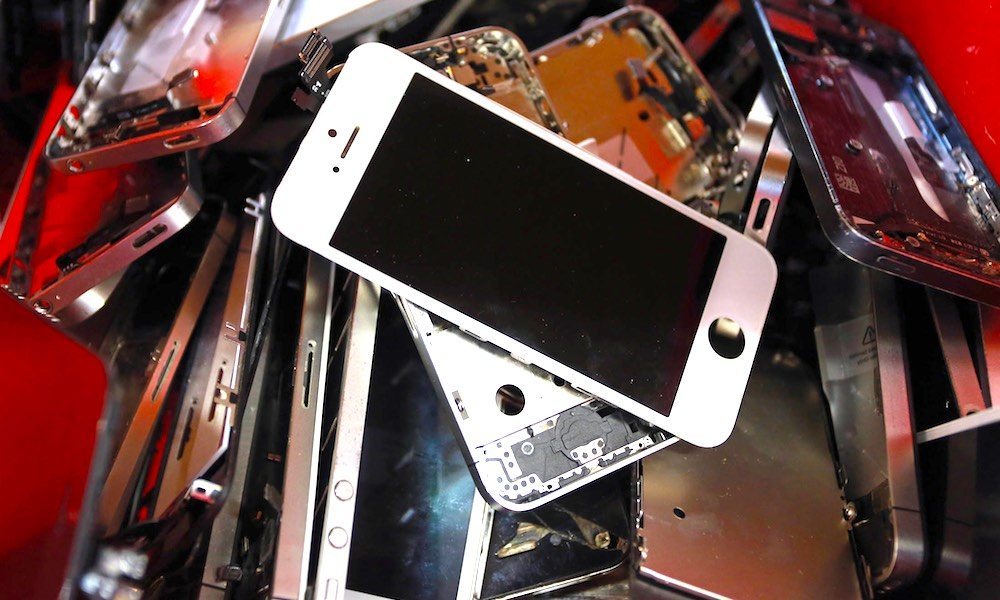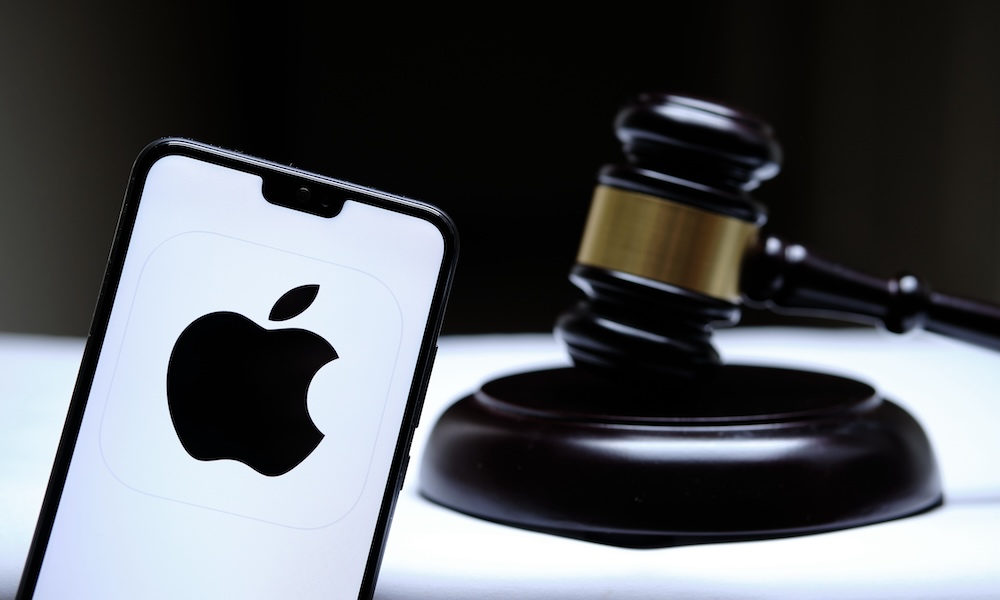Apple Drops Lawsuit Against Recycler That Resold iPhones Instead of Destroying Them

Toggle Dark Mode
A little over four years ago, Apple filed a lawsuit against a Canadian recycling firm, alleging that over 11,766 pounds of Apple devices that were supposed to be recycled had mysteriously gone missing. Now, it’s just as suddenly dropped that lawsuit.
In October 2020, The Financial Post reported that Apple was seeking $31 million in damages from GEEP Canada, a firm it had contracted with in late 2014 to destroy and recycle old iPhones, iPads, Apple Watches, and other products that were no longer suitable for refurbishment or resale.
Sadly, it seems that the company failed to account for everything that Apple sent it, leading Apple to conclude that it had instead resold nearly 100,000 Apple products that it was supposed to destroy.
While Apple has its own in-house recycling systems, it still relies on many third-party contractors to carry out its recycling business, preferring to not only avoid having old iPhones end up in landfills, but also extract key materials that can be reused in its manufacturing process. For instance, cobalt from old iPhone batteries can be recycled, reducing the amount of cobalt that needs to be mined to build new iPhones, iPads, and MacBooks.
Apple conducted an audit of GEEP Canada, an electronics firm based in Barrie, Ontario, about an hour north of Toronto, around 2018–2019, discovering that while it shipped “531,966 iPhones, 25,673 iPads and 19,277 Apple Watches” to the company, “at least 11,766 pounds of Apple devices left GEEP’s premises without being destroyed.”
GEEP confirmed these numbers, according to Apple’s lawsuit, and the audit revealed that these “misappropriated devices were then subsequently sold at a significantly higher price […] to downstream vendors who refurbished and resold the devices to consumers.”
Notably, Apple’s estimate, which accounted for about 18% of the devices it sent to GEEP, could only track cellular-capable devices that had been reactivated, such as iPhones and LTE-equipped iPads and Apple Watches. It’s likely the number of stolen devices was much higher.
GEEP denied any corporate wrongdoing, pointing the finger at three “rogue” employees who acted without the company’s knowledge. It filed a third-party claim against those employees, all of whom were in higher-level management positions, alleging that the devices were sold to Fu Yuan Yang, the president of Whitby Recycling in Whitby, Ontario, east of Toronto, who then sold them to individuals in China. Apple didn’t believe the GEEP was innocent of any wrongdoing, suggesting that even if it wasn’t aware of the scheme, the employees were placed highly enough that it shouldn’t have missed it and is, therefore, at least liable for negligence and mismanagement.
Apple’s lawsuit sought $31 million in damages and sought to be reimbursed for the monies made from the sales. Apple maintained that by reselling devices that were supposed to be destroyed, GEEP had damaged the demand for new Apple products while also creating safety issues for consumers and hurting Apple’s brand by releasing substandard products onto the market. GEEP’s suit against its former employees and the president of Whitby Recycling sought to have them repay any damages it would owe to Apple, plus its court costs.
Apple’s Lawsuit Quietly Vanishes
Today, Bloomberg’s Austin Carr reported that Apple filed to have the case dismissed “without costs” in late January. Carr recently followed up on the case with Ontario’s Superior Court of Justice, discovering the motion made by Apple to have the lawsuit dismissed.
While Apple didn’t respond to a request for comment, it seems the company’s ultimate goal may have been simply to make a point that it doesn’t take such thefts lightly. As Carr points out, cases like this in Ontario courts are automatically terminated within five years if they haven’t moved to trial; Apple’s dismissal motion was filed 4 years and 364 days after its initial complaint, so the clock was clearly running out here.
But e-waste industry veterans told me Apple’s larger intention was likely to send a strong message to its recycling vendors rather than merely pursue the GEEP case to its end.
Austin Carr
“Theft is more common in e-recycling than many realize,” Carr notes, but adds that it’s far more unusual for a company as secretive as Apple to publicly sue their partners due to the potentially embarrassing publicity.
After all, as you may already be thinking from reading the tale, if GEEP and Whitby Recycling were able to resell these iPhones, iPads, and Apple Watches, why was Apple destroying them in the first place? This kind of “forced destruction” is a controversial practice. iPhones are expensive, and critics suggest that Apple keeps them that way by grinding up serviceable products rather than refurbishing them and selling them.
On the flip side, apologists for the practice maintain that Apple (and other companies) are dealing with products that can no longer be trusted to work reliably, even if they’re refurbished. These are supposedly beyond repair to any standard that would satisfy Apple’s stringent quality requirements and have the potential of damaging Apple’s reputation and even becoming a service burden to the company as buyers of these products reach out to Apple support for assistance with problems.
Unlike Amazon, which more scandalously destroys thousands of unsold products simply to save the cost of warehousing them, Apple is presumably only sending off devices that have no viable second life left in them. Apple has an active certified refurbished store, so it’s clearly not trashing all of its old devices. There’s also no indication that the iPhones, iPads, and Apple Watches resold by the defendants in this case were functional. Many have been sold for parts, which are often in great demand among gray market repairers — something else that Apple has been fighting against for quite some time.
Nevertheless, Apple’s lawsuit may have met the company’s ultimate goal of sending a message that there can be consequences for these actions. “Apple’s GEEP lawsuit sent shockwaves across the industry,” e-waste industry veterans told Carr. GEEP didn’t deny that tens of thousands of Apple products it was supposed to recycle had gone missing, and a former executive told Carr that “the business implied when we had this Apple thing,” as many of its other clients decided it was no longer a trustworthy business partner.
Imagine if you’re HP and dealing with GEEP. You have to question: ‘If they do that to Apple, what are they going to do to us?’
GEEP executive, to Austin Carr
It’s unclear what will happen to the lawsuit GEEP filed against its “rogue” managers. Lawyers for GEEP didn’t respond to inquiries from Carr, and a lawyer for one of the defendants said he wasn’t even aware that Apple’s lawsuit had been dismissed. GEEP’s cross-claims were intended to cover its losses from having to pay Apple’s claims, but it may still be seeking to recover damages based on its loss of business and reputation stemming from their actions.








